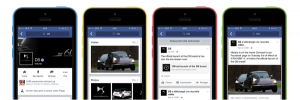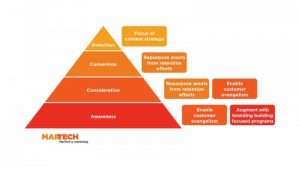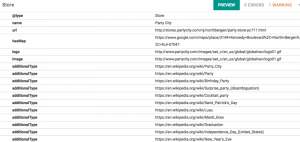
A large opportunity for improvement exists in the realm of optimization. Most marketers optimize their websites and campaigns on pure intuition alone. This approach is problematic because it produces meaningless results.
For instance, if you merely change the color of a button or the position of a lead capture box on a landing page, the results you will get are quite limited. Changing a call to action button color can often produce more clicks but what does it tell you about your visitors? There are so many elements to test, it’s endless, and unfortunately these type of tests, though extremely common, make it very hard to generate valuable insights and learnings.
A/B testing can be so much more. It can help us tap into our customer’s emotional needs, their goals and then help us build a better customer journey that will grow our business. In order to do this you have to test differently. Instead of testing elements, you need to start testing concepts using behavioural and emotional methodologies.
The Missing Link in AB Testing
Conversion optimization and A/B testing is a way of learning more about your target audience and translating that knowledge into a better product and user journey. By using conversion optimization and AB testing, it’s possible to change entire processes within a business – such as sales procedures, account management, and even customer success teams.
In our client work, my team and I have learned that the teams who are really learning from their tests and gaining these important insights, are bringing emotional triggers into their testing hypotheses. In this post we’ll take a look at the ways you can apply emotional targeting to deepen your understanding of conversion optimization, create insightful testing strategies and run meaningful A/B tests.
So how can you run these meaningful tests that drive significant results? Let’s find out.
3 Lessons in Emotional Targeting
We will focus on these three lessons in emotional targeting to evolve your optimization:
- Make it about the customer.
- Show it, don’t say it.
- Test strategies and concepts, not elements.
1. Make it about the customer.
The majority of businesses focus on themselves and create messages around their product, features, and pricing. For example a Microsoft landing page reads: “The best Windows ever keeps getting better.” Here, the entire focus of the landing page is on Windows.

We see this again on a Skype landing page, “Skype keeps the world talking – for free. Call, share, message…”
Nothing about these landing pages highlights the value for the customer. These businesses consider themselves the hero of their own story. However, the business isn’t the hero of the story, the customer is. People care about what’s in it for them, we don’t buy products or features, we buy better versions of ourselves. Your messaging and everything about your strategy should be about the customer.
Emaze an online presentation software allows people to easily create a visual experience for their audience. With large competitors such as Prezi and PowerPoint, our goal was to help Emaze stand out and highlight the value for a customer. After analyzing the data we compiled we hypothesized that Emaze’s target audience would be marketers searching for simple ways to stand out from their peers and make an impression on their managers.
The original landing focused solely on the presentations, “Amazing Presentations in Minutes!”

The variations focused on the value a customer would gain from using Emaze.
- Variation 1: Finally enjoy creating presentations!
- Variation 2: Make your presentations stand out!

The results confirmed our hypothesis. Variation 1 increased conversions by 114%. However the increase in conversion rates was just a bonus, the real value for us as a team was a clearer picture of our target audience and their needs.
Airbnb got it right with their highly targeted emotionally driven campaign “Belong Anywhere”.

Rather than just focusing on the behavioral aspects of: “Pay What you Like, to Stay Where You Like”, or focusing on the fact that they are the most well-known company in their industry, they hit the sweet spot by making it about the customer: “Welcome Home”. This emotional message now forms the backbone of their strategy – from imagery, to site design through to the language they use to speak to their customer.
2. Show it, don’t just say it.
It’s not enough to just say you’re all about the customer – you have to make the customer feel it.
Our brains process images far faster than text which is why the image and colors of a page have a huge impact on conversion rates.

“Seeing comes before words, a child looks and recognizes before it can speak. Unless our words, concepts, ideas are hooked onto an image, they will go in one ear, sail through the brain, and go out the other ear. Words are processed by our short-term memory where we can only retain about 7 bits of information… Images, on the other hand, go directly into long-term memory where they are indelibly etched.” Therefore, it is not surprising that it is much easier to show a circle than describe it. ” Dr. Lynell Burmark, Ph.D.
T his company’s original landing page consists of a sense of urgency, “Back up Everything, leave Nothing to Chance” however, it’s not enough to just say it – you have to make them feel safe using your product – show them they’re in good hands.
his company’s original landing page consists of a sense of urgency, “Back up Everything, leave Nothing to Chance” however, it’s not enough to just say it – you have to make them feel safe using your product – show them they’re in good hands.

The variation we created emphasized both the importance of saving your information “Your Memories are Precious” and that this company can be trusted “Store a copy of your files in a safe place”

By combining both a textual and a visual message, we were able to get our message across quicker and increase conversion rates by 97%. We learned more about the target audience and how to motivate it into taking action.
3. Test strategies/concepts, not elements.
Great marketing campaigns look at the entire product as an ecosystem. Rather than just changing the headline, or the colors of individual elements, they approach the product as a whole. Successful campaigns attack AB testing with a combination of both behavioral and emotional marketing. To do this, conduct tests on a strategic level, meaning test two different strategies against each other, rather than just testing individual elements, similar to the examples I’ve shown you so far.
Once the results start coming in from our tests we are able to analyze the results on a much higher level. Since each variation in our case studies represented its own hypothesis and concept the results are easier to grasp and understand. The emaze case study for example gave us greater insight to the customer’s goals – standing out in the crowd of marketers, finding an easy platform. This helped us optimize the content for email marketing campaigns, banner ads and other parts of the funnel as we had great insight to the customer. Once we land on a winning strategy, we can start drilling down to the elements of an individual page.
Turning Theory into Practice
Let’s take a look at a case study from start to end to learn how we apply emotional targeting to our testing and how you can level up.
Working with the print on demand ecommerce site, WallMonkeys our goal is to increase sales and purchases. Our first step was digging deep into Google Analytics and locating problems within the funnel. Next, our task was to understand what the problem was and how we should fix it by profiling our customers, digging into competitor analysis, market and trend study. Our research helped define a strategy that was based on fun, excitement and the anticipation of decorating your home.
The original design focused on the more business side of the service, the amount of artwork and possibilities that were available on the site.

The strategy for the variation applied all three emotional targeting lessons

Making it about the customer: No longer – “Browse the world’s finest works of art” but: “Find the decal that’s right for your wall.
Make them feel it (don’t just say it): Using the color orange we projected fun and energy, the surroundings – a lamp, table and the books framed a room that demonstrated the change people would see in their home once they buy a decal. We removed the gray and black color theme to a more clean white background that gave a fresh look to the page. The “stock” image of a non-related guy was removed and instead we introduced the cats image which also had an effect of people’s emotions with its colors and placement.
Major behavioral changes included removing the rotating slider image and moving the search bar to the front and center of the landing page to address 90% of visitors who begin their shopping experience by searching.
Testing a concept, not elements: As you can see, the variation we created had a different concept to it and as a result allowed for deeper analysis and evaluation of the test results.
There was a 550% increase in revenues.
This was a major win that also helped us gain invaluable insights on our customers. This test also revealed a major problem with search on the site. People were looking for specific artwork or images and instead were getting confusing and irrelevant search results. Once AB testing helped reveal this issue we could then fix it and then increase revenues even more. This is the essence of conversion optimization – running meaningful AB tests based on our customer’s feelings to improve our customer journey.
Over to you
In order to gain real value from your tests and achieve meaningful results, you must plan well and create a clear cut strategy. Start with the bold moves, hypothesize new concepts based on emotions and test them. Learn from your tests, do not be afraid to take risks and above all, accept failure. Failure is the building block that success is built on.
Digital & Social Articles on Business 2 Community(31)
Report Post






